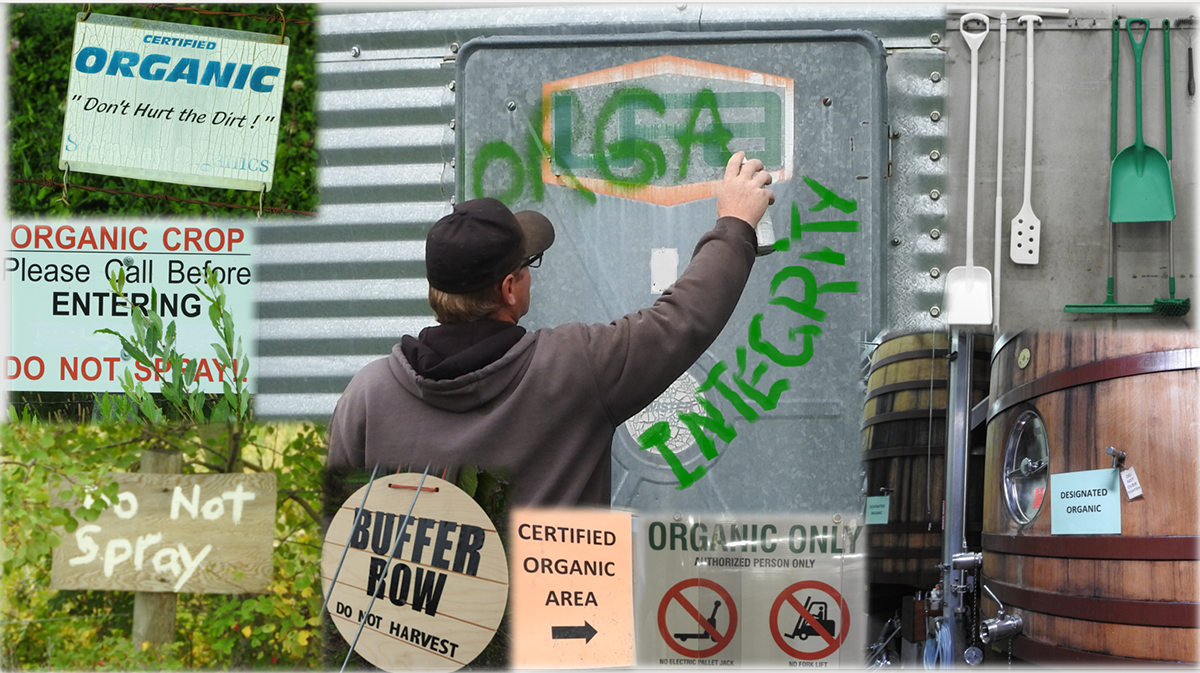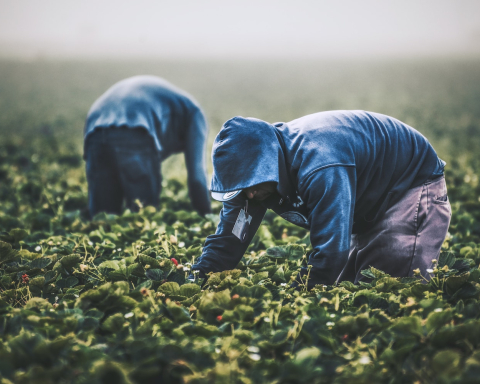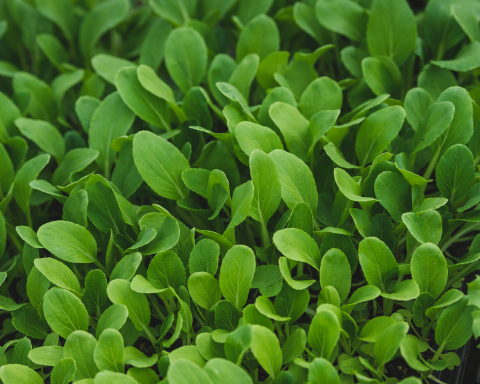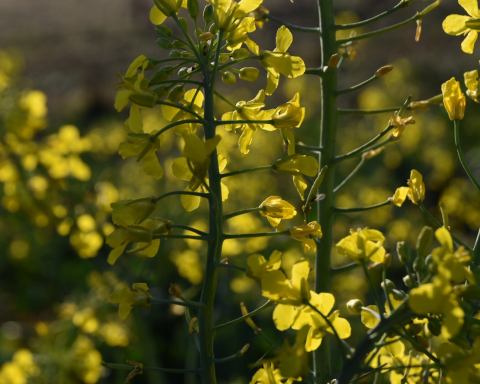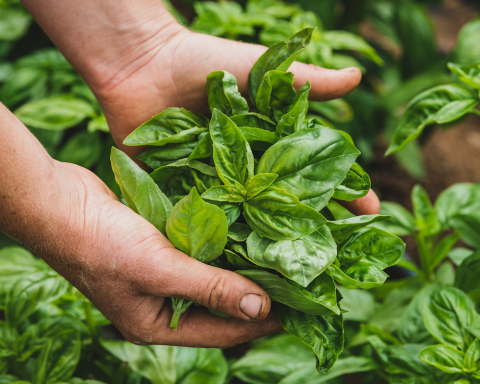Integrity from Field to Fork
Marjorie Harris
COR Section 8: Maintaining organic integrity during cleaning, preparation and transportation
Operators are responsible for maintaining organic integrity at all points of the market supply chain, from production through point of sale to the final consumer.
Organic product integrity, from the farmer’s field to the consumer’s fork, is maintained through an organic product supply chain that identifies critical control points where preventive and protective measures are taken to prevent co-mingling or contamination of the organic product. The organic supply chain’s integrity control points are often designated with signage as a prevention and control measure that follows the organic product through production and handling to the consumer. The organic supply chain is verified for integrity and compliance during the organic inspection.
What are the attributes of organic products whose integrity are being protected throughout the supply chain?
IFOAM’s Four Principles of Organic Production provides a vision of organic production as a sociologically and ecologically integrated food production system for a healthy planet:
- Principle of Health: Healthy soil, plants, animals, and humans equal a healthy planet;
- Principle of Fairness: Equity, respect, and justice for all living things;
- Principle of Ecology: Emulating and sustaining natural systems; and
- Principle of Care: For the generations to come.
Certified organic foods produced following these principles gain these intrinsic philosophical attributes as well as measurable characteristics. The consumer’s confidence in the ability of organic production to provide premium quality foods is directly linked to the consumers positive perception of organic integrity being maintained in all aspects of the organic supply chain.
Here in BC, the 2018 implementation of enforceable provincial regulations governing the use of the label “organic” in the marketplace reinforces positive public perception and confidence in organic foods as premium products. Nationally, the Canadian organic industry has won a strong ally and partner with skills and tools for oversight and monitoring the organic supply chain—as of Jan 15th, 2019, the Canada Organic Regime (COR) regulations are in force as Part 13 of Safe Food for Canadians Regulations (SFCR), under the jurisdiction of the Canadian Food Inspection Agency (CFIA).
CFIA is responsible for the compliance verification and enforcement of Part 13 of SFCR COR regulations. Oversight and management mechanisms include:
- Organic Certification Bodies (CBs) are accredited by Conformity Verification Bodies (CVBs). COABC is a CVB.
- CVBs are designated and audited by CFIA.
- As per Directive 14-01 (see sidebar), organic products are selected at random or by cause for chemical residue testing as part of CFIA’s chemical residue monitoring and surveillance programs.
- All pesticide violations in excess of Maximum Residue Limits (MRLs) are investigated by CFIA.
Directive 14-01 specifies the criteria and timelines for reporting that a CB shall follow when CFIA delivers positive chemical residue results from an organic product. CFIA has set the actionable range for CBs from below < 0.01 ppm to above 5% of an applicable MRL for the specified pesticide.
Continued growth in the organic sector relies in part on consumer confidence in the delivery of a chemical residue free organic product. Chemical residue testing and monitoring of the organic supply chain has intensified as the organic industry has grown and become regulated. Chemical residue testing has become the go-to tool for verifying that organic products are not contaminated. In the global marketplace organic producers are also dealing with the challenges of meeting additional chemical residue rules for private and off-shore organic certification regimes that are operating surveillance and testing programs within Canada.
Signage designating organic production is an important tool that provides risk reduction measures for preventing co-mingling and chemical contamination at critical control points. Here are a few anecdotal examples to illustrate key control points in organic market supply chain from field to fork:
- The buffer zone is a critical control point, providing a “clearly defined and identifiable boundary area that separates an organic production unit from adjacent non-organic areas.” Signage along roadway buffers indicating “No Spray” and “Organic Farm” is often an effective method to alert local weed spray programs not to spray, although mistakes do still occur. One incident involved a well-signed buffer fence for organic livestock pasture. The livestock farmer had posted signs at each field corner post and in between as needed. The district Invasive Weed Program staff somehow sprayed through the buffer zone and a fair distance over the fence into the organic pasture. The farmer’s pregnant livestock were grazing in the pasture at the time and were exposed to the sprays. Unfortunately, this meant the herd had to be decertified and could not be sold as organic. The farmer had an avenue of legal recourse available for financial compensation because the signage was clearly visible on the pasture fence.
- Chemical spray drifts are more likely to deposit residues onto organic fields that are not adequately protected by leafy hedgerows growing in the buffer zone. Some off-shore organic certification regimes hold more restrictive limits on chemical residues and send surveillance teams to take test samples of soil and plant tissues on crops destined for export markets. One farmer learned the hard way that planting thick vegetated buffers are worthwhile for preventing, or at least reducing, spray drift—when his crop tested positive for chemical residues, his contract was nullified.
- Contamination can occur with packaging materials. COR Section 8.1.6 states that “organic product packaging shall: a) maintain organic product quality and integrity.” In one situation, imported berries became contaminated after being packed in conventional cardboard boxes for shipping. The country from which the berries were being imported sprays all cardboard boxes with fungicides as a common agricultural packing procedure. The trace amounts of fungicide left in the box transferred to the berries at detectable levels. Organic packaging needs to be clearly segregated and labeled as organic to prevent packaging mistakes.
- COR speaks to the need for temporary signage to be attached to wagons or trucks to visibly identify a load when at-risk organic crops are being moved between bulk storage bins. A producer who had all of his organic documentation in order was able to be compensated full price for his organic crop when it was discovered to have residues from being comingled at the seed cleaning plant.
- Contamination by chemical residues or plant-derived toxins can occur through a variety of mechanical primary and secondary processes such as cleaning, dehulling, scouring, polishing, pearling, milling, puffing, grinding, and splitting. Even though conventional equipment is cleaned or purged before the organic product is processed, CFIA has found that detectable residues are often transferred to the organic product. It is important for the organic industry to secure dedicated organic equipment to prevent theses residue transfers during processing.
- Organic products shall be accompanied by the information specified in COR Section 8.4.2., including the product’s organic status and traceability information. The organic certificate establishes the product’s organic status and is an essential supply chain document. While conducting random surveillance, CFIA purchased imported grain from a grocery store and tested for residues—a shocker, almost two dozen pesticides were detected! Further investigations by the CB revealed that the bulk product had been purchased with solely an invoice stating “organic”. The supporting organic certificate did not accompany the sale. The product was not traceable and was very likely a case of fraudulent product.
- The organic market supply chain depends on risk reduction measures to be implemented and actively monitored to prevent contamination and comingling. Everyone benefits when organic integrity is maintained, from the farmer to the final consumer, who can have full confidence in their choice of a premium organic product.
Directive 14-01 in Brief:
When a product contains chemical residues in excess of the Maximum Residue Limit, CFIA will follow-up on the non-compliance in addition to the CB.
4.1 When chemical residues are detected below < 0.01 ppm:
- the CB shall inform the operator that chemical residues are present
- at the next scheduled inspection, the CB will assess why chemical residues were present and may sample for chemical residues
- deliberate use of prohibited chemicals by an operator shall result in the CB initiating the suspension/cancellation process as per Part 13 of the SFCR
4.2 CB actions when chemical residues are detected:
1. Between 0.01 ppm and 5% of an applicable MRL (inclusive); or
2. Between 0.01 ppm and 0.1 ppm if no MRL is specified (inclusive),
- the CB shall inform the operator that chemical residues are present;
- the CB shall assess why chemical residues were present and shall sample products currently available at the operation or production site for chemical residues no later than the next scheduled inspection. If the affected lot is not available, a different lot should be sampled. If the affected product is not available, a similar product should be sampled;
- if the inspection and sampling indicate continued presence of prohibited chemicals which is not due to deliberate use, the CB shall issue a non-conformity (NC) and request corrective action within a specified time frame;
- if the inspection and sampling indicate deliberate use of prohibited chemicals by an operator, the CB shall initiate suspension/cancellation of the operation as per Part 13 of the SFCR; and
- the CB shall report findings to the CFIA through their CVB by using the CFIA standardized reporting template within 60 working days from the inspection.
4.3 CB actions when chemical residues are detected:
1. Above 5% of an applicable MRL; or
2. Above 0.1 ppm if no MRL is specified,
- the CB shall immediately schedule an inspection and initiate an investigation to determine why chemical residues are present;
- the CB shall conduct additional sampling of products currently available at the operation or production site as part of the investigation. If the affected lot is not available, a different lot should be sampled. If the affected product is not available, a similar product should be sampled; and
- if the inspection and sampling indicate continued presence of prohibited chemicals which is not due to deliberate use, the CB shall issue a non-conformity (NC) and request corrective action within a specified time frame. Products shall lose their organic certification status as per section 7.11.1 (b) of ISO/IEC 17065 if chemical residues are detected above 5% of an applicable MRL OR above 0.1 ppm if no MRL is specified.
Further reading:
inspection.gc.ca/food/requirements- and-guidance/organic-products/ guidance-documents/directive-14-01/eng/1398462727461/1398462789113
inspection.gc.ca/food/requirements- and-guidance/organic-products/operating- manual/eng/1389199079075/1554143470958?chap=2
Marjorie Harris, BSc, IOIA VO and Organophyte.


